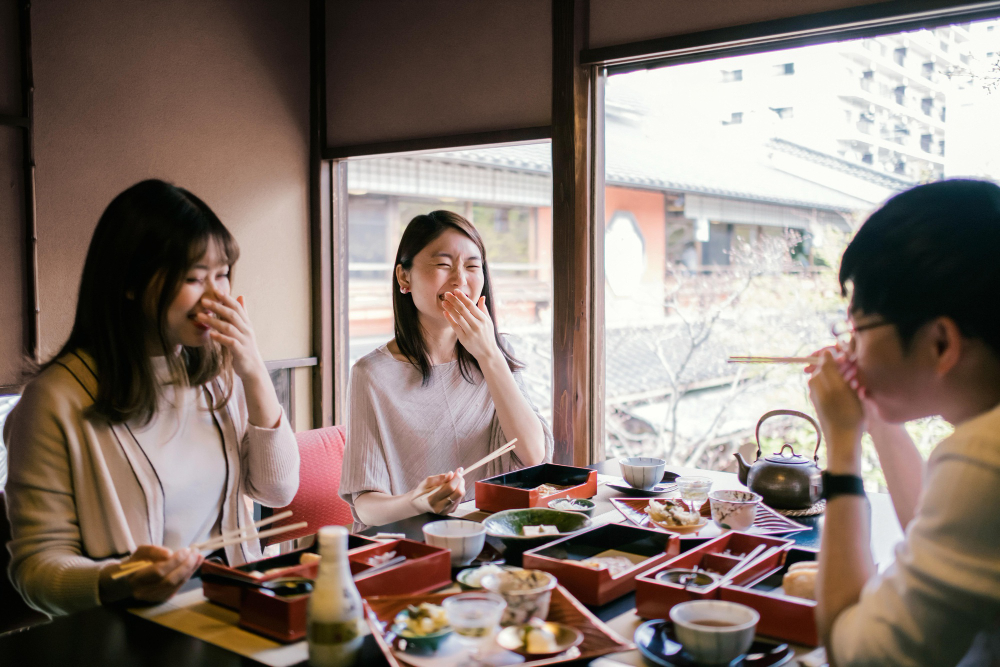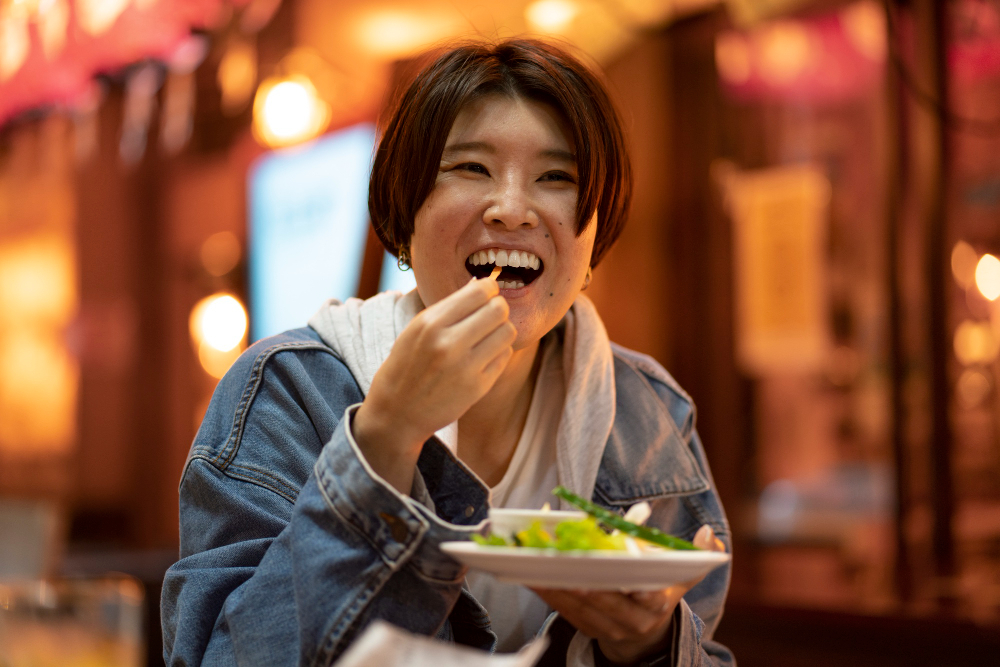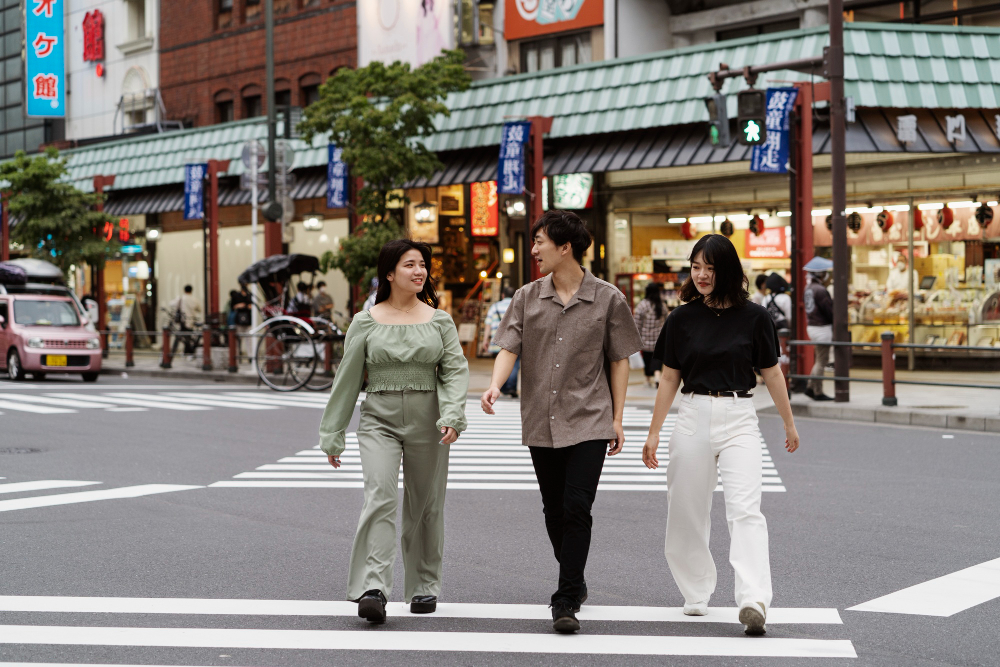First of all, I’m going to come right out and say it – Of course, overweight and obese people exist in Japan.
Japan is renowned for its slim population, a stark contrast to the rising obesity rates in many Western countries.
But what is it about Japanese culture, habits, and lifestyle that makes it so hard to gain weight or stay overweight in this unique country?
I’m not saying everyone in Japan is skinny or fit.
But the rate of obesity is very, very low.
It’s currently only 4.5%. And that’s quite a negligible rate compared to the 42% obesity rate in the USA.
So, in this post, I will list out everything different in Japan that actually contributes to better health and fitness.
If you find that you like this lifestyle, you can actually consider changing your current lifestyle to move more and adopt their eating habits.
This post contains affiliate links, meaning I may make a commission at no extra cost to you if you decide to click on a link and purchase something. Click here to read the full disclaimer.
1. Portion Sizes Are Much Smaller
Japanese meals are served in smaller portions compared to the supersized plates common in Western countries.
I was quite surprised when I noticed that their meals are so satiating and it fills you up 70-80% which is the perfect amount so you can function without feeling heavy or bloated.
By eating smaller portions, people naturally consume fewer calories while still feeling satisfied.
This practice also helps prevent the habit of “mindless eating,” where large servings lead to overeating without realizing it.
Their meals also often consist of multiple small dishes that encourage moderation and variety, rather than overwhelming quantities of a single item – which I love.
Everything is so well balanced.
2. Their Culture is Centered Around Fresh, Whole Foods

Traditional Japanese cuisine emphasizes fresh vegetables, seafood, rice, and fermented foods like miso and pickles.
Highly processed foods and sugary snacks aren’t that popular. In fact, they’re discouraged.
They focus on nutrient-rich, whole foods that provide energy and satiety without unnecessary additives.
Moreover, fermented foods contribute to gut health, which is linked to better metabolism and weight management.
3. Daily Physical Activity Is Built Into Life
Walking and cycling are part of everyday life in Japan.
With efficient public transportation systems and compact cities, people walk much more frequently to get to work, school, or errands.
It doesn’t matter if it’s small activities like climbing stairs or walking to the train station – this all accumulates naturally, creating a sort of daily workout.
Unlike in car-dependent cultures, physical movement is an effortless part of life.
4. Eating Slowly and Mindfully

This is one of the main reasons why people are so fit.
The Japanese practice of eating with mindfulness—taking time to savor each bite—leads to better digestion and awareness of fullness cues.
Meals are treated as a ritual, not a rushed activity.
By focusing on their food, people tend to eat less and appreciate the flavors more.
A lot of us tend to eat when we’re stressed and we don’t stop eating till our plates are empty – eating mindfully can drastically reduce how much you eat.
5. School Lunches Teach Healthy Habits
From a young age, children in Japan are taught to appreciate balanced meals through school lunches that feature nutritious, portion-controlled foods.
This may seem like a small thing – but it makes a world of difference.
This instills healthy habits that carry into adulthood.
These meals also emphasize variety, with an array of vegetables, proteins, and grains, teaching kids the importance of eating a diverse diet.
I remember only eating junk food as a kid. I reduced my junk food intake in my mid-twenties but till then I had no clue that it was actually bad for me.
6. Social Pressure to Stay Slim
Yes, this is not a great reason – but I wanted to include it because this is true.
While it’s a delicate topic, societal norms in Japan often emphasize maintaining a slim figure.
Being overweight can lead to social stigma, which motivates many to prioritize their health and fitness.
Although this pressure can be controversial, it also fosters a collective awareness about health and well-being, which contributes to Japan’s low obesity rates.
These people don’t dilly-dally around this topic.
7. Smaller Living Spaces = Smaller Food Storage
With limited kitchen and storage space in many Japanese homes, it’s common to buy fresh groceries daily rather than stockpiling processed or calorie-dense foods.
This habit encourages the consumption of fresh, unprocessed meals and minimizes the temptation of snacking on unhealthy, packaged food.
8. The Influence of Traditional Tea Culture

Green tea, a staple in Japan, is rich in antioxidants and often replaces sugary drinks.
Drinking tea not only aids digestion but also curbs the desire for calorie-heavy beverages.
Matcha, a powdered green tea, is currently making the rounds globally only because of its health benefits, including boosting metabolism and providing a natural energy source.
I’ve started drinking it every single morning and it feels so good!
9. Active Aging Population
Elderly Japanese people are among the most active in the world.
I’m sure you’ve seen plenty of movies and understood this to be true.
The expectation to stay physically fit well into old age creates a culture of lifelong movement and health.
Activities like gardening, tai chi, and walking are common, proving that consistent movement is key to maintaining a healthy weight.
10. High Quality Over Quantity
The Japanese prioritize quality over quantity in their meals.
I mean, they’re like this with everything – technology, health, they rarely compromise on quality.
Small, beautifully presented dishes encourage mindful eating and this definitely decreases overeating!
By valuing the experience of eating over sheer volume, people naturally consume fewer calories.
11. Standing Desks and Active Workspaces
Many offices in Japan incorporate standing desks or encourage walking meetings, making it easier for employees to stay active throughout the day.
This culture of movement even during work hours helps people burn extra calories and prevents the sedentary lifestyle that is most common in other western countries.
12. Minimal Use of Dairy and Fats
Traditional Japanese meals use minimal dairy and heavy fats, opting instead for lighter broths and vegetable-based oils.
Yes, it doesn’t sound exciting, but it’s quite tasty once your tastebuds adapt to less sweet things.
This reduces calorie consumption without sacrificing flavor.
Instead of butter or cream, meals rely on soy-based ingredients, fish, and vegetables to create richness.
13. Public Weigh-Ins and Health Initiatives
Some workplaces and communities encourage public health initiatives, including regular weigh-ins.
While this can be controversial and isn’t something I’d favor, it does foster a bit of awareness of maintaining a healthy weight.
Again, this is not something I’d say is helpful – but I have noticed this in their culture and it’s important to be unbiased when writing
These programs often come with support for exercise and dietary improvements, making health a community effort.
14. Public Transit Encourages Walking

With the extensive use of subways and trains, Japanese people often walk long distances to and from transit stations, making incidental exercise a part of daily life.
These small but frequent movements contribute to calorie burning and overall fitness.
15. Cultural Celebration of Balance and Moderation
In Japan, the concept of “hara hachi bu” or eating until 80% full is a common practice.
I mean this is something I learned in my late twenties. But over there – people adopt this when they’re kids.
This philosophy discourages overeating and promotes living a long and healthy life.
I like that their focus on moderation extends beyond food to other aspects of life!
16. Low Prevalence of Sugary Foods
Desserts in Japan tend to be less sweet and portioned smaller than their Western counterparts.
I’ve tasted their desserts and it’s nothing compared to what you’ll get in the US.
Fresh fruits are often enjoyed as a treat instead of sugary cakes or candies.
This cultural preference for subtle sweetness helps limit excess sugar consumption.
17. A Love for Seasonal Ingredients
Japanese cuisine celebrates seasonal ingredients, which ensures meals are super fresh, nutrient-dense, and naturally lower in preservatives and added sugars.
Seasonal eating also encourages variety, keeping the diet exciting and nutritious year-round.
18. Public Baths and Spa Culture
Visiting public baths or onsens is a popular pastime in Japan.
Yes, it’s not something we are used to.
This culture of self-care often includes maintaining a healthy weight for comfort and confidence in communal spaces.
Additionally, the relaxation and stress relief provided by onsens helps reduce cortisol levels, which are linked to weight gain.
19. Emphasis on Home-Cooked Meals
Unlike fast-food-driven cultures, Japan places a high value on home-cooked meals.
Preparing meals from scratch not only ensures better nutrition but also helps control calorie intake.
Cooking at home also fosters a deeper connection with food and encourages healthier eating habits.
Conclusion
Again, I will acknowledge that every culture has its unique challenges and dynamics.
This is not a dig at Western culture – but a comparison to how food is viewed in both.
I genuinely feel that Japan has valuable insights into maintaining a balanced, healthy lifestyle.
Adopting even a few of these habits could make such a big difference in how we approach our health and well-being.
Let this post inspire you to embrace mindful eating, active living, and a renewed appreciation for your body!










